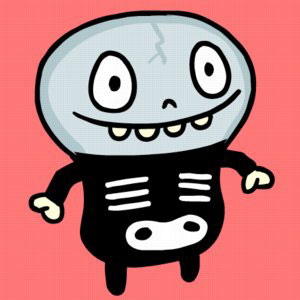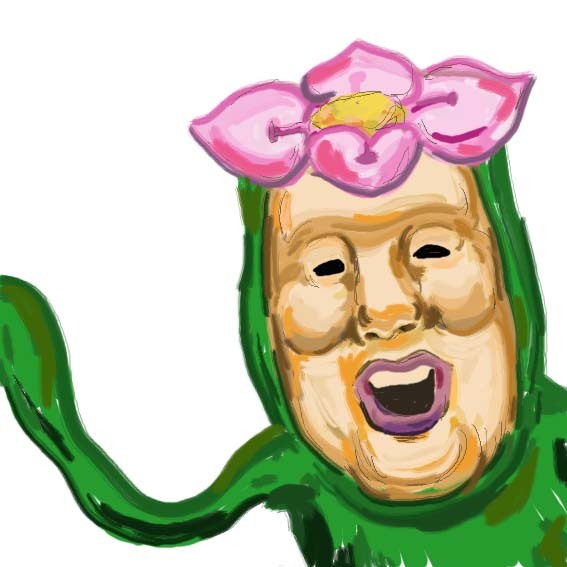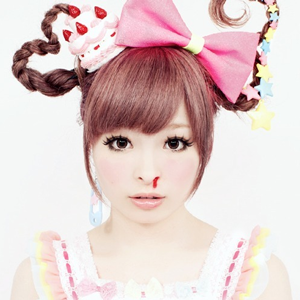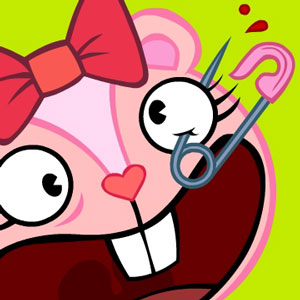 |
 |
 |
 |
There is one word that best describes Japan's impact on fashion and culture among the young generation all over the world in the twenty first century. This word is kawaii. Kawaii has many connotations, and in English they are such words as "cute," "pretty," "lovely," "charming," and "sweet." Languages all over the world have words with a meaning similar to kawaii. Why is the Japanese concept of kawaii becoming so popular internationally? Perhaps it is because many people want more kawaii in the present world.
It seems that next to the culture of anime, the culture of kawaii is also very popular. One facet of this can be found in Japan's unique fashion sense. Do you know about Lolita street fashion? It is a unique fashion style derived from European and American fashion of the 19th century that expresses innocence, prettiness, modesty, and femininity. I think this represents the kawaii ideal. In Paris, some high school girls ride the subway wearing Lolita dresses. In America, students attach Hello Kitty dolls to their school bags. In Thailand, some high school girls go to school wearing fake Japanese school uniforms that were bought in Harajuku. This popularity is increasing everywhere.
It seems that foreigners have come to recognize the word kawaii to mean "super cute." In Japan, kawaii has been used as an adjective which originally meant to expresses the love for small things and children. These days, it is used in different ways from its original meaning. For example, when we see a lovely elderly person, some may say that they are kawaii. I think that things that are pink, shiny, and fluffy are kawaii. I am happy when I see such things. I think that kawaii things are something that can make anyone feel comfortable. Usage of the word kawaii has evolved into new terms, such as kimo-kawaii, guro-kawaii and busu-kawaii. Kimo-kawaii is a compound word with kawaii, or "cute;" and kimoi, which is an abbreviation for kimochi warui, meaning "an ill or sick feeling." So although something may look awful, there may also be something cute about it. Examples of this are Little Bony from Karada de Asobou and the very popular Kobito Zukan. Guro-kawaii is a similar word that mixes kawaii and guro, which is short for "grotesque." Thus, it has the twofold feeling of cuteness and eeriness. In my opinion, famous examples of guro-kawaii are the artist Kyary Pamyu Pamyu and characters such as the Happy Tree Friends. Kyary Pamyu Pamyu is a singer and model who combines cute fashion imagery with gross accessories and makeup, such as eyeballs and bones. Happy Tree Friends is a cartoon involving cute, small animals who are prone to ultra-violence. As for busu-kawaii, busu means "ugly," which in fact has the opposite meaning of kawaii. This may seem to be an oxymoron, but when we see the wrinkled, scrunched, and awkward face of a bulldog or a pug dog, we can say that this is busu-kawaii. I think that the way the power of kawaii reverses the negative meanings of words by combining these adjectives together is uncanny.
I thought about whether kawaii can be used in the same way as "beautiful" to describe a woman. To me, "beauty" conveys an image of someone like a super model. It seems to me that a woman who is kawaii is more attainable than one who is beautiful. I think that beauty can be intimidating, so a girl who is cute and charming can be more easily approached by men. I believe many other young women think so, too, and they express themselves as being kawaii. As a result, young women who strive to create a unique sense of kawaii will reach a very different sense of fashion than those who strive toward beauty.
Lastly, the comforting feelings one has from kawaii things can be a source of healing, such as for young women who are trapped in depression. The kawaii revolution of Japan is evolving every day in order to give light to a dark world.
 |
 |
 |
 |
 Next: Bubblegum Crisis manga translations!
Next: Bubblegum Crisis manga translations!
 Go back to the "Greg's Life" Table of Contents
Go back to the "Greg's Life" Table of Contents
mail: greg -atsign- stevethefish -dot- net